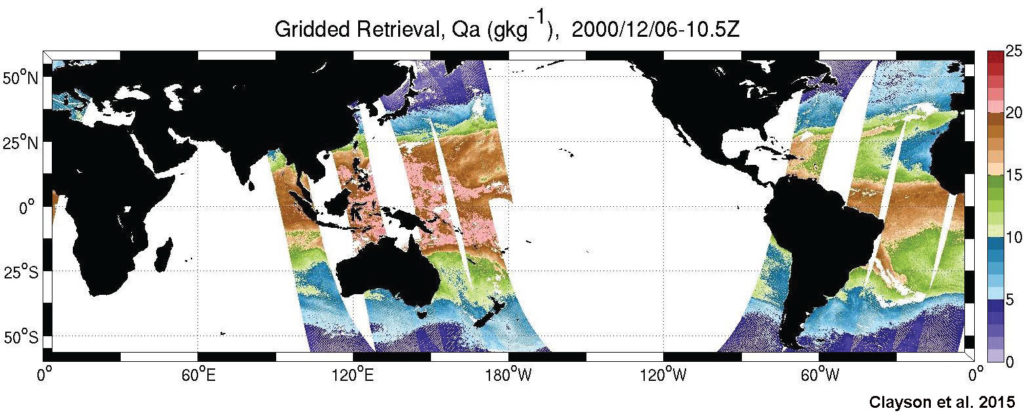Ongoing Improvements
Turbulent exchanges of heat and moisture across the atmosphere-ocean interface are critical elements of the Earth’s energy and water cycle. They are particularly important to the upper ocean mixed layer energy budget in conjunction with radiative and momentum fluxes. However satellite-derived turbulent fluxes require knowledge of multiple surface and near-surface ocean and atmospheric geophysical fields. These include sea surface temperature (and derived specific humidity), near-surface wind speed, air temperature and air specific humidity. Among these variables sea surface temperature and wind speed have dedicated science teams and/or international efforts — e.g. Group for High Resolution Sea Surface Temperature (GHRSST); NASA Ocean Vector Winds Science Team (OVWST) — focused on improving satellite retrieval of these quantities and developing long-term climate data records.
Both near-surface air temperature (Tair) and humidity (Qair) have received comparatively less attention likely due to the reduced sensitivity to these parameters in passive microwave observations. Despite these lesser direct sensitivities several investigations have demonstrated the effectiveness of these observations for estimating Tair and Qair. Indeed, passive microwave estimates of these parameters are the primary inputs into no less than five state-of-the-art satellite-derived turbulent sensible and latent heat flux products. However, many of these estimates rely on effectively the same retrieval algorithm/concept and a recent study has shown significant systematic biases among these products with clear geographical commonality. Enhanced approaches for the retrieval of Tair and Qair, in particular, are necessary for the continued improvement of turbulent air-sea fluxes.
The proposed research targets the development of a new retrieval technique applied to passive microwave remote sensing observations resulting in more precise quantification of ocean surface evaporation. This work supports numerous Earth Science research areas including in particular studies of the Earth’s energy and water budgets.

Funding Agencies
The National Aeronautics and Space Administration funded this research.

Partners/Collaborators
This is a joint project with Institution Number One, College Number Two, Organization Number Three, and Corporation Number Four.